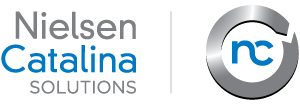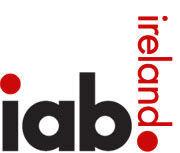Newsroom
Program Areas
-
PlatformOne comprehensive targeting solutions enable omni-channel marketing to help you deliver a consistent message and experience across every customer touch point. Our solutions leverage Neustar’s Authoritative Identity to give you the most accurate, actionable, and up-to-date audience targeting data. Target with Precision PlatformOne provides a comprehensive set of targeting solutions to give one view of the attributes and preferences of your customers and high-value prospects that enable omni-channel targeting and deliver a consistent message and experience across every customer touch point. Our Targeting solutions empower you to discover or build high-value target audiences based on Neustar’s Authoritative Identity to give you the most accurate, actionable, and up-to-date audience targeting data. Audience Targeting Capabilities AdAdvisor Audiences Access over 15,000 pre-defined attributes, each built by linking over 80 million interconnected data points, and updated daily from over 200 data providers. AdAdvisor Audience Planner Discover, identify, and build audiences to meet your specific campaign goals by leveraging the industry’s gold standard for digital planning. Audience Extension Leverage your CRM or POS data to model high-value customers and identify prospects with similar attributes, increasing your reach and maximizing your marketing effectiveness. Cross-Device Targeting Confidently reach your target audiences with the only cross-device platform based on authoritative identifiers to finally break down the separate silos of search, display, and mobile. For the full list of audience targeting capabilities, visit http://bit.ly/1fkTIq9 (link is external)
-
Crimson Hexagon allows businesses to answer strategic business questions using flexible, customizable categories. Whether you want to look at purchase intent, product attributes, drivers of sentiment, competitors, or category-level conversations, our platform can help. Best of all, with Crimson social media analytics you pay only for insights – not data. Why Crimson Hexagon? Data Sources Every minute, we ingest and index a torrent of data points from Twitter, Facebook, Instagram, Weibo, blogs, forums, and more. You don’t need to buy the data, we already have it. With Crimson, you can access and analyze any of it at any time. Topic Discovery Intuitive visualizations like topic wheels and word clouds give you the power to easily discover and measure key topics of conversation, bringing important trends into focus so you can tell a compelling story. Text Analysis Review conversations. Select examples. Group posts into categories worth measuring. Our platform adapts, learning to focus on what matters and ignore what doesn’t. Because “positive,” “negative,” and “neutral” isn’t enough. Interest Affinities Go beyond what’s being said and understand the people behind the content. By identifying interests that drive social action, Affinities adds new and revealing context to your analysis: an ongoing understanding of the changing composition of your audiences and what moves them. Social Account Monitoring Benchmark and track the performance of your social media accounts to identify which content is driving engagement and understand whether those conversations are positive or negative, who’s getting involved, and more. With Crimson, you can track competitors too, giving you a complete view of your evolving social landscape. For more on Crimson Hexagon, visit http://bit.ly/1DU6J5L (link is external)
-
Blog
Nielsen Catalina Solutions Finds Mobile Drives Incremental Sales for Kellogg's Pop-Tarts With Pandora Campaign
CINCINNATI--(BUSINESS WIRE (link is external))--Nielsen Catalina Solutions (NCS), a leader in enabling marketers to increase the sales impact of their advertising by powering cross-channel platforms with actual purchase data, today announced results of a new campaign that showed a seven percent lift in offline retail sales for Kellogg Company (NYSE: K). The campaign, delivered across multiple devices in conjunction with Pandora (NYSE: P), the leading Internet radio service, delivered exceptional results and determined mobile as the most effective channel for driving sales. The Kellogg’s Pop-Tarts brand sought to deliver relevant audio messages to teenagers on Pandora to encourage them to consider Pop-Tarts as a breakfast option with the goal of increasing sales among loyal and lapsed buyers. Pandora ultimately reached over four million households with 30 million impressions on tablet, mobile and desktop. Additionally, for every dollar spent on advertising, Pop-Tarts received over three dollars in incremental sales. Although mobile-only households comprised 60 percent of those exposed to the campaign, they contributed to 70 percent of the total incremental impact, validating mobile’s effectiveness. “The campaign on Pandora was a natural fit for the Pop-Tarts brand given teens’ affinity for listening to music over multiple devices,” said Jon Suarez-Davis, global vice president of digital media and strategy, Kellogg Company. “However, mobile advertising measurement has been a notoriously difficult nut to crack for brand marketers. NCS’ household data and methodology is a unique differentiator in identifying actual buyers via any kind of device and determining the effect of mobile advertising on incremental sales.” “We are proud to be at the forefront of helping marketers identify the mobile opportunity and ensure they receive the highest return possible – especially in the CPG category,” said Heidi Browning, senior vice president of strategic solutions at Pandora. “Working with NCS on this exciting campaign allowed us to provide Kellogg’s with valuable data on actual retail sales and further our mission to efficiently leverage our clients’ dollars and deliver advertising solutions that are great for both listeners and brands.” For full article, visit http://bit.ly/1h2Jexq (link is external) -
What We Measure: Real-Time Engagement Metrics When you run a program with Collective Bias, you have access to our real-time dashboard to get rich engagement metrics at your fingertips, so you can track any piece of content our community creates for you. We track Total Media Value (TMV), earned vs. paid, organic social shares and true blog analytics, by measuring the value of each piece of content and engagement. While most companies just provide visits or blogger self-reported numbers, our technology tracks actual page views, reach and social actions taken across multiple dimensions, along with organic search reputation lift in concert with social queues and content. Highly Targeted by Geography, Influencer Type & Store Affinity Our platform allows advertisers the flexibility of targeting campaigns by influencer type, geography and by their favorite retailer. We can enlist Millennial influencers for one store, moms at a different store and send members of our Latino community to another. Targeting is nothing without scale, and Collective Bias delivers both. For the full article visit http://bit.ly/1HBqRof (link is external)
-
IAB Europe surveyed more than 1,000 advertisers, agencies and publishers from 29 markets in Europe to provide clarity on the current adoption of programmatic and stakeholder perspectives on its potential for strategic competitive advantage. Programmatic trading investments and revenues set to increase Over 90% of all stakeholders say they will increase their programmatic investment or revenue over the next 12 months and 40% expect an increase of more than a third. Many stakeholders including strategists, planners, buyers and operational teams across the digital ecosystem are embracing this technology to gain efficiencies, meet client demand and deliver brand campaigns at scale. Stakeholder adoption of and attitudes towards programmatic advertising vary Publishers show a controlled, cautious approach with an emphasis on managing their own data and maximising value and margins by monetising inventory more effectively. Agencies see themselves at the forefront of programmatic adoption, gaining trading, operational and audience targeting benefits. Advertisers are the stakeholder group least likely have programmatic in-house at this point in time. Further learning and education is needed Stakeholders recognise that inefficiencies need to be tackled in order to empower programmatic to deliver maximum value. Barriers to adoption exist with hiring and training people with the right skill set the top obstacle. This demonstrates the need for further learning and education and the recently published IAB Europe Road to Programmatic White Paper (link is external)provides an analysis of the decisions facing advertisers, agencies and publishers in considering how to capitalise on the programmatic opportunity and address the accompanying challenges. “As the IAB Europe report demonstrates, further education and clarity on the programmatic ecosystem are needed in order to encourage adoption. It’s important for advertisers to be able to define and engage their audience with greater cost efficiency.” says Txema Garitano Plágaro, Innovation, Business Analytics & Search Management, SEAT. Full article available at http://bit.ly/1Mf0UCT (link is external)
-
In the face of a mobile revolution, consider this: Should where we're telling stories change how we're telling stories? How should video advertising evolve for mobile? Google's Art, Copy & Code team set out to find an answer. Here we explore the results of our first experiment. Our mobile devices have become constant companions. They're in our hands, in our pockets, and on our bedside tables—everywhere we are. They're often the first thing we look at in the morning and one of the last things we check before turning in for the night. So what does this powerful connection mean for creatives and the stories we tell? And how does that small screen affect the way people experience these stories? Ad creatives have long lamented mobile. The small screen can be a challenging canvas for big stories. Yet we know that brands can establish a deeper personal connection on mobile, more so than on TV or desktop. So as the mobile world increasingly shifts to video, brands need to figure out how to tell new and better brand stories on mobile devices. Introducing Unskippable Labs What resonates with people in mobile video advertising? And how is that different from what resonates on TV? Nobody knows. The best way to try to understand this emerging mobile world is to experiment: Put creative out there and see what people respond to in meaningful, measurable ways. Using YouTube TrueView, an ad format that allows people to choose if they want to watch or skip an ad, we tested three alternate cuts of the same story to understand what makes an ad worth watching. We also used Google's Brand Lift solution to gather metrics like ad recall and brand awareness, which helped us understand if particular cuts were more impactful than others. Our key question with these experiments was simply: What makes an ad unskippable? Full article attached and available at http://bit.ly/1K0AAtv (link is external)
-
Recent moves by Google (link is external) and Facebook have left some industry observers declaring this the dawn of a “walled garden” era of ad tech (link is external) — one in which brands and agencies need to use a platform’s ad tech when purchasing that platform’s media. But the agency holding company Omnicom Group has found a novel use for Atlas: Checking Google’s math. It has begun adding Atlas tracking pixels to measure ads served by DoubleClick, Google’s ad serving competitor, to compare each product’s results against one another, according to executives familiar with the agency’s ad tech plans. It marks the first major test for the nascent Atlas and the people-based measurement system it has been espousing as a replacement for cookie targeting. This could be the start of more competition for DoubleClick, according to several ad tech executives. Adding Atlas tags to DoubleClick-served ads will get Omnicom two distinct reports on its ad campaigns: one from Atlas, which measures campaign performance against Facebook login data, and another from DoubleClick, which employs cookies for measurement. Despite signing a deal last September to become the first agency to use Atlas — the ad server Facebook bought in February 2013 and re-released last fall — Omnicom has yet to convince many clients to start using Atlas for ad serving. That means they have yet to tap into Atlas’s unique targeting capabilities, which includes Facebook’s trove of users data. This is a way to utilize Atlas without abandoning DoubleClick. Facebook has pushed Atlas with what it calls “people-based (link is external)” marketing, which it claims will not only be more accurate for desktop campaigns than cookies but will provide the long-sought-after solution to mobile’s cookie problem (link is external). For the full article, visit http://bit.ly/1J3cj4j (link is external)
-
Chango lets you target and retarget users wherever they spend their time on-the-go. Our intent data — to find users on desktop and reach them on mobile. Our Approach Our cross-device solutions can be used in a variety of ways, depending on your set of goals. Highlighted below is our approach to these different cross-device solutions. Scenario 1, Facebook: Retarget customers on Facebook mobile based on their previous behavior on desktop. Change’s cross-device Facebook solution is a combination of Chango’s intent data and Facebook’s cross-device data. This allows you to reach your target audience on their desktop and mobile devices as part of the same campaign. Chango identifies the target audience for the campaign. Chango messages the target audience on desktop. Change re-messages the same target audience. For the full article, visit http://bit.ly/1I5Yv9d (link is external)
-
What’s up with The New York Times Co. and programmatic? We’ve pondered that question before (link is external), but the publishing giant declined to speak at the time. Since then, Times SVP of Ad Products and R&D Michael Zimbalist has revealed to AdExchanger that the company intends to release more inventory cautiously into the RTB space. It also is planning an expansion of non-RTB programmatic initiatives. One such area the Times is considering is developing an audience extension buy. Much has changed at the Times in recent months. “We had a change of leadership in our sales department,” Zimbalist said. “Meredith Levien came in to head sales after a long search, and we’ve reorganized the whole department. In doing that, I stepped in and took on, in addition to my role as head of R&D, a new role in the company, which is head of ad products. We never had a formal head of ad products function before.” As part of this restructuring, the Times has consolidated a number of functions: ad ops, ad systems, product management, some of its custom development work and, of course, programmatic. Zimbalist spoke with AdExchanger on the changes. AdExchanger: What elements of programmatic has The New York Times embraced, and what elements has it decided to forego? Michael Zimbalist: There’s no area of programmatic we’re philosophically opposed to going forward with. Programmatic is now part of an overall practice. We’ve recast our thinking around programmatic as part of a total yield-management practice, which is part of ad products. So it reframed our view in the marketplace to incorporate total yield both in our direct-sold and in our overall market. That’s the setting. At the present time, we’re leaning into programmatic through our partnership with Google and Google AdX. Full interview available at http://bit.ly/1gmbzhQ (link is external)
-
Blog
Step Aside, Creators. Brands Are Taking Over YouTube
40 billion views for the top 100 companies
The digital video world will converge on Anaheim, Calif., this week for the sixth annual VidCon, a three-day extravaganza that's grown from 1,400 YouTubers and their rabid fans, to 20,000 strong, with top-tier creators from Vine, Vimeo, Tumblr and Meerkat, just to name a few. Some of the biggest brands on the planet will also be in attendance. It's no wonder. While about 90 percent of video viewing is still on TV, according to Nielsen, 18- to 34-year-olds—a demographic coveted by advertisers—are increasingly cutting the cord. "It takes a very different media mix today to reach that audience than it did 10 years ago," explained Jenny Schauer, media director at Digitas. She believes YouTube, and increasingly Facebook, are uniquely positioned to reap the rewards of brand videos. "Taking content from a brand and putting it right in front of consumers in the News Feed, that's where Facebook is really strong." Meanwhile, at VidCon, YouTube will take its own well-deserved victory lap. An exhaustive study released today by video marketing firm Pixability digs into viewability, reach and growth of the top 100 global brands as determined by Interbrand (see above chart for the top five brands on YouTube and the top 100 global brands online (link is external)). The veritable treasure trove of data is a marketer's dream: YouTube's channels count 73 million subscribers, with subscribership up 47 percent year over year. Full article available at http://bit.ly/1TLmI9U (link is external) -
July 20, 2015 — Over the last several years, publishers and advertisers have continued to adopt programmatic buying and selling of digital inventory into their media strategies; however, within the complex programmatic ecosystem there has been a lack of consensus around the definition of programmatic and its associated types and formats and the size of the programmatic market in comparison with the overall internet advertising market. This study, commissioned by the IAB, seeks to estimate revenue associated with programmatic selling and buying of advertising and establish a benchmark for measuring the growth of programmatic. Read the full report, attached.
-
Blog
Tsunami of Offline Customer Data is Flowing to the Web
Data-Onboarding Business, Now Named Connectivity, Has Grown Significantly
Call it something dry like "data on-boarding" or something marketable like "connectivity." Whatever it's called, Acxiom-owned LiveRamp (link is external) is doing a lot more of it than a year ago. The company currently "on-boards" or connects 20 billion consumer records representing individuals or households each month, or around 240 billion per year. That's a big leap from the 3 billion customer records it brought to the web in March 2014, up from 1.3 billion in March 2013. Those records contain consumer data generated offline, such as information from auto leads, retail transactions or banking relationships. The digitized data is used by companies who want to communicate with their current customers via email or targeted digital ads, optimize website pages or measure the impact of digital ad campaigns on offline sales. More than 200 marketing-technology platforms are integrated with the LiveRamp system -- part of Acxiom's newly-named Connectivity division -- meaning the data can be plugged into all sorts of ad targeting, email marketing, site optimization and campaign analysis tools. Acxiom reported that Connectivity revenue rose 367% to $22 million in fiscal Q4 2015. The growth is a result of more awareness of data onboarding, said James Arra, VP-strategic partnerships for LiveRamp. But it's also the May 2014 Acxiom acquisition (link is external) that has facilitated business with clients that may have been out of reach when LiveRamp was still an indie, such as highly regulated financial services firms. Full article available at http://bit.ly/1SpFtgN (link is external) -
Media brands were quick to adopt video apps Periscope and Meerkat (link is external) to broadcast live streams, and now Facebook marketers want in on that action. Social platform BumeBox started hosting live Facebook chats (link is external) for brands like VH1 and Discovery Channel back in October, as an alternative to the Twitter Q&As (link is external) that brands typically organize. For example, Sony Masterworks set up a real-time chat on Facebook to promote a new album from artist Jackie Evancho last fall. Now, MTV and iHeartRadio are plugging video into those virtual meet and greets. Late Thursday afternoon, MTV set up a Facebook chat with Teen Mom 2 star Kailyn Lowry to talk about her show. And last week, iHeartRadio ran a Facebook Q&A (link is external) with YouTube singer Max Schneider. He responded to eight questions from fans in one hour with short video clips. It's all part of Facebook's plan (link is external) to turn the site into a video platform for brands, publishers and creators. Clips are uploaded straight to Facebook through BumeBox's platform with a branded logo at the top of the screen, similar to what Periscope streams look like. The social videos aren't technically streamed since they are uploaded, but the idea is to crank out responses through clips quickly, similar to how brands use Periscope and Meerkat to answer questions in real time. Full article available at http://bit.ly/1KaHk75 (link is external)
-
Real-time Bidding (RTB), a key component of the programmatic advertising revolution, represents a massive platform change in the way we advertise online by bringing the relevance and efficiency of search to display. RTB spend will reach 429 million GBP this year (eMarketer) as budget moves away from more traditional channels. If advertisers consider RTB for display there are a couple of tips to help get it right: Advertise to the individual not the ‘segment’ Every customer is slightly different from the next. With this in mind the traditional marketing method of grouping customers into ‘buckets’ does not always make sense. For example, consumers within the “mums” segment will be vastly different. A mother with a newborn will have hugely different needs to one who is just about to send their eldest off to university. Everyone has unique demographic traits – income levels, hobbies, family statuses, interests, etc. Grouping customers into segments relies, partly, on human perception, but driving performance is not always intuitive in the same way. RTB means targeting at the impression level as opposed to traditional media buys of large chunks of inventory. Therefore, there is a unique opportunity to target individuals – segments of one. Machine learning and the application of algorithms make this possible. In the past guesswork decided the majority of ad buys and creative execution, now, through machine learning, we can use computers to impact specific performance goals. Fresh data is key for reaching and influencing consumers While the number of data sources available for advertisers is never-ending advertisers must remember that not all data sources are created equal. The time between collecting the data and using it is an important factor. Commonly datasets used in RTB can be over a week old, this means they are stale and fail to identify the right customer at the right point in their purchase journey. Find out more at http://bit.ly/1LefbPr (link is external)
-
Last week during the DoubleClick Leadership Summit (link is external) (DLS), we introduced cross-device measurement across all of our DoubleClick advertiser products. Today, as the first post of our week-long DLS series, we're excited to announce that these cross-device metrics will be rolling out to all DoubleClick advertisers in the next week. Mobile continues to reshape how consumers engage on digital: they are increasingly turning to the nearest device to act on an immediate need in the moment and then seamlessly shifting their attention from screen to screen to complete their journey. With the path to purchase becoming increasingly fragmented, it’s essential marketers understand how consumers interact with their brand across all devices. When marketers have access to cross-device insights, they will also make the best decisions about how to invest their marketing dollars. With this launch, advertisers can access cross-device metrics in all buying tools within our platform -- DoubleClick Campaign Manager, DoubleClick Bid Manager, and DoubleClick Search. Full article available at http://bit.ly/1I2qppH (link is external)
-
The Center for Digital Democracy (CDD), through its counsel, requests the following documents under the Freedom of Information Act (FOIA), 5 U.S.C. § 552, related to enforcement of the Children’s Online Privacy Protection Act (COPPA), 15 U.S.C. § 6501 et seq.: All annual reports submitted to the Federal Trade Commission (FTC) by COPPA safe harbor programs for the reporting period of July 1, 2014 through June 30, 2015 as required by the COPPA Rule, 16 C.F.R. § 312.11(d)(1), including, for illustrative purposes, reports from the following safe harbor programs: Aristotle International Inc. Children’s Advertising Review Unit (CARU) Entertainment Software Rating Board (ESRB) iKeepSafe kidSafe Seal Program (kidSAFE) Privacy Vaults Online (PRIVO) True Ultimate Standards Everywhere (TRUSTe) CDD asks that if any of the requested records are stored electronically that the FTC provide the requested records to CDD in their native electronic format as required under FOIA. 5 U.S.C. § 552(f)(2). Request for Fee Waiver or News Media Fee Benefit CDD asks the FTC to waive all fees associated with this request because disclosure of the records is in the public interest or, alternatively, to limit any fees charged to CDD to reasonable duplication fees because it is a noncommercial request by a member of the news media. 5 U.S.C. §§ 552(a)(4)(A)(ii)(II), 552(a)(4)(A)(iii). CDD is entitled to a waiver of all fees associated with this request under FOIA’s public interest standard and relevant FTC regulations. 16 C.F.R. § 4.8(e). The regulations permit the FTC to waive all fees associated with a particular request when a requester demonstrates that (1) “disclosure will likely contribute significantly to public understanding of the operations or activities of the government” and (2) “that the request not be primarily in the commercial interest of the requester.” 16 C.F.R. §§ 4.8(e)(2)(i)-(ii). CDD’s request qualifies under both prongs of the FTC’s public interest fee waiver standard. First, disclosure of the annual reports provided to the FTC by COPPA safe harbor providers and any related correspondence will contribute significantly to the public’s understanding of the FTC’s oversight of private entities tasked with enforcing federal law. COPPA was designed to protect children’s privacy online, an issue of significant public importance that concerns parents, consumers, lawmakers, and the general public. The instant request concerns data on how actively private safe harbor providers are policing COPPA compliance by their members. Relatedly, the records will also disclose whether and how the FTC performs its oversight role with respect to the safe harbor programs.1 From the reports, the public can scrutinize both the safe harbors’ performance and the FTC’s actions in administering the safe harbor program under COPPA. Because CDD intends to publish the requested documents, the public at large will benefit from better understanding whether and how the FTC is protecting children’s privacy online. Full complaint attached.
-
NEW YORK: Netflix, the online video platform, believes that programmatic advertising can provide numerous benefits for its brand – not least the ability to deliver personalised marketing messages at scale. Kathy O'Dowd, Netflix's global director/programmatic marketplace and channel development, discussed this topic at MediaPost's OMMA Programmatic Display conference. "We are moving to programmatic, in part, because it is so efficient, she said. (For more, including tips for brands, publishers and agencies, read Warc's exclusive report: Netflix's programmatic defence balances man and machine (link is external).) "We can be more individualised in the kind of marketing that we're doing – and that's ultimately, I think, every advertiser's dream." Given that Netflix has an extremely broad potential audience, its need for tailored digital communications is especially powerful. "You think about Netflix as a brand: we could be a fit for anyone with a credit card and an internet connection. But that doesn't mean that we're going to benefit from approaching everyone in the exact same way," O'Dowd said. "So, programmatic allows for that database buying. Then, on the flipside, the automation of it is great because we can do individualised marketing at scale." Full article available at http://bit.ly/1TxyOU5 (link is external)
-
Facebook commissioned SalesBrain, a US-based neuromarketing agency, to understand how people’s brains and physiology respond to identical stimuli viewed on a smartphone versus on a TV. The study focused on how the brain responds to 4 key areas: engagement, attention, emotion and retention. Today, people tune into content whenever and wherever they want. With viewing happening at home on a TV and on-the-go on a smartphone, marketers want to ensure that their messages are being received no matter the screen. To determine if their advertising is effective, marketers have traditionally turned to self-reported market research techniques, but those approaches have limitations. Enter neuromarketing, which according to the Neuromarketing Science & Business Association “is the systematic collection and interpretation of neurological and neurophysiological insights about individuals using different protocols allowing researchers to explore non-verbal and unconscious physiological responses to various stimuli for the purposes of market research.” Though still in its infancy as a marketing research practice, neuromarketing is giving marketers a direct view into people’s physical reactions to stimuli rather than relying solely on people’s ability to report their own feelings to that stimuli. Full article available at http://bit.ly/1KdlrGM (link is external)
-
Programmatic media-buying technologies are taking over the internet at a rapid pace, so much so that traditional offline media is the new frontier for the tech. Programmatic, digital out-of-home (DOOH) has been pioneered in APAC, and is now being exported around the globe. ExchangeWire charts is progress. The means of buying OOH media space using programmatic technology has been piloted in Australia for well over a year (link is external), and is about to be exported to other parts of the region; plus Europe is also on the roadmap with the launch date there imminent. The potential disruption of programmatic media trading will be discussed at next week’s ATS Singapore, during a panel session entitled ‘Joining the Dots – Why Programmatic Can Solve the Multi-Channel Conundrum’, where Vicki Lyon, Site Tour, CCO, will share her experience of rolling out the tech in Australia. Site Tour is part of a specialist consortium aimed at developing the opportunities in this space, along with IPG Mediabrands’ programmatic buying division Cadreon, plus Brandscreen, that has been running over 1,000 OOH screens that can display media traded using programmatic technologies. Site Tour, effectively an ad exchange, recently inked a contract with programmatic video advertising firm TubeMogul to allow advertisers to programmatically purchase video ads on billboards, kiosks, and elevator screens in Australia. The pairing has extended this relationship to the UK where they are imminently to launch the offering. ExchangeWire caught up with Site Tour’s Lyon (pictured) to learn more about the offering. Full article available at http://bit.ly/1UgdT9l (link is external)
-
The digital data “arms race” that is propelling major companies around the world to expand their data collection, consumer profiling, and online targeting capabilities illustrates how information from and about us drives the commercial (and increasingly political) marketplaces. Corporations want to know as much about us as possible—including how to influence us at any point in what they call (link is external) the “consumer journey.” Companies are significantly investing in sophisticated “data management platforms” that regularly gather and analyze our behaviors. Large amounts (link is external) of so-called first-, second-, and third-party data (information collated from their own files on us and amplified by additional files from numerous data brokers) are used to influence our online and offline experiences. Antitrust and merger regulators (link is external) have not kept up with how consumer data is being used today. It’s become a dynamic and critical factor, whose “actionabilty” (link is external) (the capacity to use our information both instantly and effectively) to influence the decision-making of both individuals and groups is crucial for competiveness. Companies are increasingly expanding their ability to effectively (link is external) track individuals and use that information (where are we online, what did we do, whom we communicate with, and what we read, buy, etc.). These practices illustrate how commercial surveillance has become a fundamental part of our lives today. But violating our privacy is just one key and disturbing dimension of this largely invisible data apparatus. Another is that data is used in new ways as part of a much more complex system that delivers influence and promotes behavioral changes. How data is used today to transform the consumer experience should be a focus of competition regulators. Merger reviews need to go beyond issues related to what price we may pay for a product to explore how data is and will be used to change our perceptions, relationships, and actions with items and brands. While advertisers and marketers have always been in the persuasion business, they’ve never before had the capabilities they have today—from neuromarketing to social media marketing to advanced data analytics used for targeting and much more. And nearly every day these companies advance the data-driven digital influence process. The very nature of contemporary media companies is all about using our information to drive consumer transactions, regardless of device and location. (See Google (link is external), Facebook (link is external), etc.). We still don’t know what the cumulative effect of all this will be, but our consumer-protection and competition regulators need to be on the cutting edge—not looking backward. Both the Department of Justice and the Federal Trade Commission need to stay abreast of how Big Data and the techniques tethered to it change the nature of markets. The approval (link is external) of Big (link is external) Data mergers (link is external) by the DoJ and the FTC without a thorough analysis and public accounting, illustrates that it’s time to reform the process. This is on the agenda of consumer advocates, including those working together across the Atlantic.



















